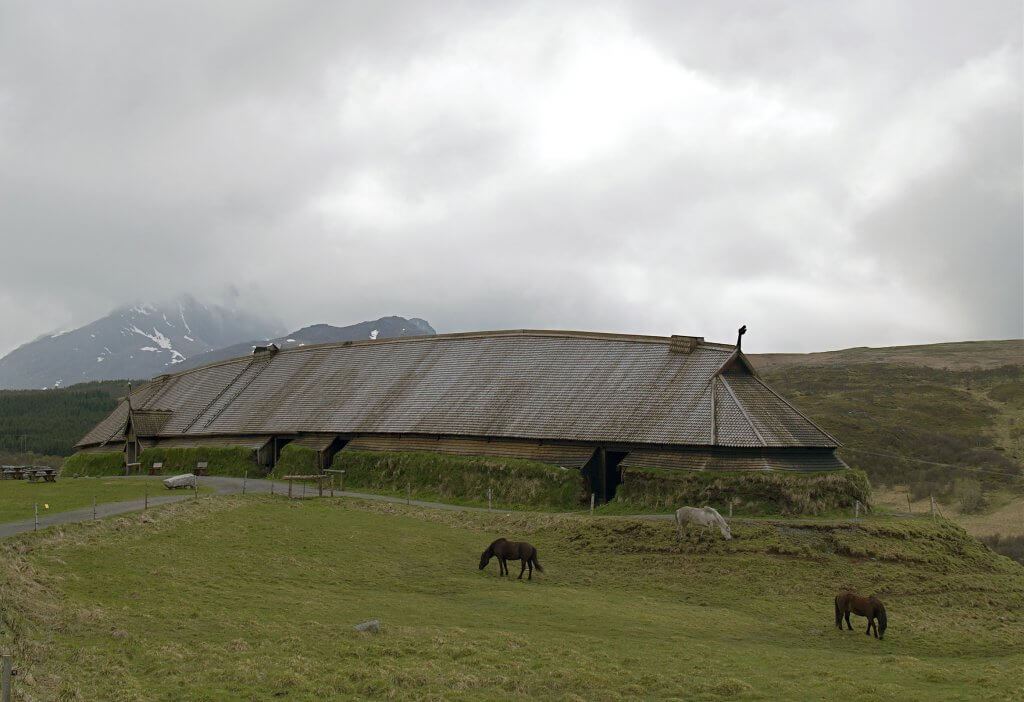With the evidence of Vikings having arrived in North America before Columbus, we wondered what Vikings would have thought if they had made it to Alaska. Vikings ranged far and wide across Europe and the Atlantic, and they learned to adapt their lifestyles to the places they conquered. Icelandic Vikings built different homes than those of the European Continent. So, what if Norwegian Vikings landed on the shores of Alaska?
Longship or Angyat

Longships had a shallow draft that allowed the Vikings to go up rivers. They could carry from 24 to 50 oars and had a mast with a square sail to catch the wind. Longships reflected the owner’s personality, wealth and influence. Rather than trying to withstand the beating of ocean swells, the boats would flex to allow voyages in the open ocean.
Meanwhile, in Alaska, Sugpiaq families owned Angyat boats. Designed for carrying larger loads and more people, these skin-covered boats were used for harvesting and open-sea travel. The boat could accommodate 20 paddlers and was between 20 and 30 feet long. The bulbous bow allowed the rowers to use less power to push the boat through the water and is a design that is now accepted as the standard for modern ships.
Longhouses or Ciqlluat

Most Vikings would have come from family farms where the longhouse was the main building. It provided space for multi-generational families and their livestock. The wood support beams for the roof divided the longhouse lengthwise into three sections. There could be one fire pit in the center of the house or a series of smaller fire pits along the central corridor. Longhouses provided little privacy for those living there. They were likely smoky, had no windows, and made for great places to hold a feast. The walls of longhouses of Norway were made of wood planks, wattle and daub with moss stuffed into the areas where wind might otherwise sneak into the home.
If Vikings had landed on the shores of the Kenai Peninsula, they would have met either the Athabaskans or the Alutiiq. (The Alutiiq called themselves “Sugpiaq,” which is the term we will use here.) Sugpiaq homes, known as Ciqlluat, were dug into the ground with wooden supports used to support sod roofs.
Climate Comparison
Norway and Alaska share the same latitude, but the Norwegian Current keeps it warmer than Alaska. Norway experiences about 90 inches of rain each year. The western regions see an average January low of 33 degrees Fahrenheit and an average July high of 67 degrees.
The Kenai Peninsula experiences about 22 inches of rain and 88 inches of snow each year and temperatures range from an average January low of 7 degrees Fahrenheit to an average July high of 64 degrees. Even Vikings would have been cold in Alaska.
Norwegian Vikings
While the climate may have been a little colder than what the Norwegian Vikings were used to, they would recognize many of the features of the Kenai Peninsula. There are fjords in both places, and the experience of the Northern Lights would have been similar. They would have adapted, likely following the lead of the Sugpiaq, and would certainly have learned a few things about shipbuilding from Alaska’s indigenous peoples.
Sources: https://www.nps.gov/articles/alutiiq-outer-kenai-coast.htm
http://www.native-languages.org/definitions/ciqlluat.htm
https://www.lifeinnorway.net/viking-longhouses/
https://www.alaska.edu/news/system/angyaq-hall-of-fame.php
https://www.climatestotravel.com/climate/norway
https://www.dkfindout.com/us/history/vikings/viking-longship/
https://www.asme.org/topics-resources/content/engineering-the-viking-longboat
https://global.hurtigruten.com/inspiration/experiences/northern-lights/myths-legends/



